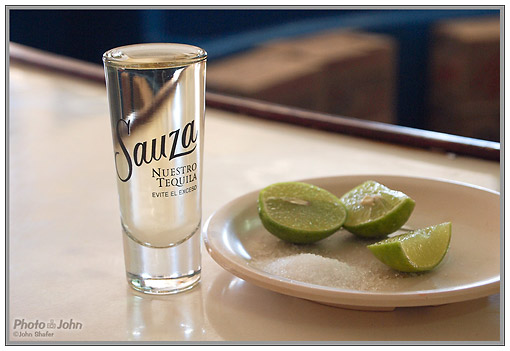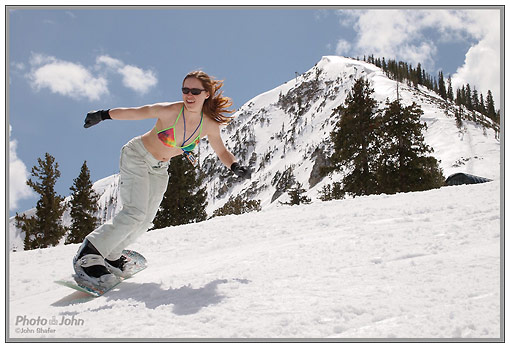Camera Experience – The Olympus E-PL1 In Mazatlan
Let’s get to the meat of this review – the Olympus E-PL1 Mazatlan travel experience. This was a real vacation and I wanted to keep things simple and light so I made a big gamble and left all the digital SLR gear at home in favor of the tiny but mighty Olympus E-PL1. I packed the Olympus body and two lenses along with my laptop, iPod, passport, a point-and-shoot camera and miscellaneous other junk in a large shoulder bag that fit under an airplane seat. It was awesome not having to hump around my 35-pound camera backpack – especially when we boarded last on a full return flight. If I’d had my camera pack I would have had to check it and risk lost or damaged camera equipment – totally unacceptable.
My main concern taking the E-PL1 to Mazatlan was whether I would miss shots and regret my decision. The answer is a definite, “no.” In fact, I think I was probably able to do more with the E-PL1 than I would have with a full DSLR rig. Besides the small size, I also benefited from the built-in, sensor-shift image stabilization and the 2x conversion factor. The E-PL1′s sensor-shift image stabilization means that no matter what lens you use you can use slower shutter speeds (Olympus claims 3 stops with the E-PL1) without blur from camera shake (Image Stabilization article). That’s great when shooting in low light situations like the Mazatlan central market and cathedral.
The Four Thirds sensor is smaller than an APS-C sensor and that gives you a 2x digital crop compared to a full frame / 35mm camera. With the conversion, the 14-42mm kit lens I used most of the time has an effective focal length of 28-82mm. That’s a great walk-around zoom range. For longer shots I brought the Olympus Zuiko 40-150mm f/4-5.6 Four Thirds lens and Micro Four Thirds adapter. That lens is comparable to an 80-300mm lens on a full frame or 35mm camera but it’s only about the size of a jar of baby food. Between those two lenses I had a hell of focal range available to me on the trip.
I already mentioned that the E-PL1′s contrast detect auto focus isn’t as precise as a digital SLR. However, for the type of pictures I took in Mazatlan, it was not an issue. A firmware update right before my trip improved auto focus speed and accuracy with the kit lens but the 40-150mm Four Thirds lens auto focus was still pretty bad. On the other hand, temperamental auto focus is a small price to pay for a lens the size of my fist with a 300mm telephoto reach. And it’s not like it didn’t work. I just had to keep it steady and pay extra attention to my focus. As the Micro Four Thirds lens options increase, things will get better. There are two new Olympus Micro Four Thirds zoom lenses – a 9-18mm and a 14-150mm. Both lenses are designed for better auto focus performance – it would have been sweet to have the 14-150mm zoom. Next time maybe I can replace both the 14-42mm kit lens and the 40-150mm Four Thirds lens with the new 14-150mm zoom!
Although the Olympus Pen camera auto focus is a bit slow and finicky compared to digital SLRs, I have taken some nice action photos with the E-PL1. Good action photos with the Pen cameras require extra planning and care, though. You’ll need to predict the action, pre-focus and time your shot well. Using the EVF helps – I’ve found it next to impossible to take good panning photos using just a rear LCD display. LCD blackout is also an issue for action photos. In burst mode you can’t see anything in the viewfinder or LCD after you press the shutter release. Once again – planning your shots is the key to success. And for what it’s worth, if you’re comparing to the Panasonic Micro Four Thirds cameras, I’ve had the same problems shooting action with the Panasonic G1 and GH1. These issues are inherent to compact mirrorless cameras so be prepared to deal with them whether you buy Olympus Pen, Panasonic G-Series, Samsung NX or Sony NEX. If action is your top priority, a digital SLR is still the way to go.
I discovered an unexpected benefit with the E-PL1; it’s a lot less conspicuous than a digital SLR. It looks more like a big point-and-shoot than the full-powered camera it actually is. People paid less attention to me than they would if I had been carrying my EOS 7D and a big, pro lens. This made me a lot more comfortable taking pictures in Mazatlan’s central market and the surrounding neighborhoods. I was less worried about being a target for thieves and I also think people were less concerned with me taking their picture since I looked like just another tourist.
I didn’t shoot any video with the E-PL1 while I was in Mexico but the E-PL1 is currently my favorite camera for video capture. As I mentioned in the Features section, the EVF adds a third point of contact for handheld video and that makes it great for outdoor movies when I don’t want to carry a tripod. The Four Thirds sensor is also a bit smaller than the APS-C sensors in entry-level DSLRs like the Canon EOS Rebel T21/550D and Nikon D5000. That gives it a bit more depth-of-field, which means a bit more focus cushion when filming. Those two things make it easier to get sharp, smooth video with the E-PL1 than with an HD DSLR. And for sharing on the Web, which is all I do with my video, the 720p video resolution is just fine.
Next – Olympus E-PL1 Image Quality >>
|






Whilst I completely agree with the comment that AF performance isn’t up to DSLR quality and I wish they put in an AF illuminator into this camera., I think you’re way off base with the image quality not up to most DSLRs. Which DSLRs are you comparing this camera to? I own a Canon 450D and the pics from my new E-PL1 are actually quite visibly better!
I have had a look at DPReview.com and their image quality analysis results are very different from yours. Also the lack of EXIF data in your studio samples are not helpful. It’s hard for me to tell whether your settings are right. Also if I may say, Adobe’s raw converter just doesn’t bring out the best in this camera – and furthermore you haven’t quite stated the Lightroom settings used, etc. You should try Olympus’ free Viewer 2.0 raw converter using the Olympus RAW algorithm.
Thanks for your comment, Jonathan. just downloaded one of the studio tests and I can see the EXIF data. I’m not sure why you weren’t able to see it. What settings do you want to know about? I’ll be happy to provide whatever information you want. As for which cameras I’m comparing it to. There wasn’t a particular set of cameras. Your 450D is two generations old, though. If you want, you can download our 450D studio samples and compare those. I’m comparing to more current cameras like the Nikon D5000, D90, Canon EOS 7D, 550D, etc. High ISO image quality is definitely better with those cameras. To be clear though – I never said the E-PL1 was bad. It’s just that you’ll get better from a D5000, D90, 550D, etc. How many people actually need better, though?
Regarding Lightroom – I said I made no adjustments. That means all I did was open the file and convert it to a TIFF. I made no adjustments while it was open in Lightroom. For what it’s worth, I’ve used the Olympus software and I don’t like it. It’s clunky and slow. And I’ve done some careful comparisons between Lightroom and the Olympus software and haven’t seen any noticeable image quality difference with conversions from the same images. If there is a difference, it’s news to me.
No matter what, I appreciate your comments. You’re free to disagree with me on anything you want. In fact, a little disagreement is good because it makes people think for themselves and look a little closer. Since you own an E-PL1 I would be very pleased if you’d write a review in our user reviews. That’s really the best way for you to share your experience with the camera.
The autofocus is slower than a dslr but I think you need to better qualify what that means. For a great many people including dslr users the need for that extremely fast autofocus is not necessary. I shoot with Nikon D700 cameras, D5000, as well as many others and for my type of photography AF speed is not critical. I find the Olympus Micro Four Thirds more than adequate to get the job done. Everything is relative.
Image quality? You are way off base. I have worked in the photography industry for a great many years. Over 40 and as far aas I am concerned the image quality rivals a great many current dslr’s that are out there today.
As for lenses, what are you missing? Between Olyjmpus and Panasonic there is just about every range covrered and if that is not enough then get adapters for Niikon, Canon, Leica, Pentax, Contax, etc. I rally enjoy using my Voigtlander Noktons on this camera. The Olympus 9-18 will knock your socks off. So will my 50mm 1.1 Nokton.
Lightroom 3 does a great job on jpegs, tiffs and raw. And yes, the Olympus software is horrible.
I think the image quality on e-pl1 is realy bad compared most dslr, especially indoors. Even iso 100 have visible grain! Iso 500 is HORRIBLE! Sure outddors and for travel its o.k, but it can not replace a real dslr, never….
People who claime that fast af is not necessary…. well lets just say they don´t have kids running around…. For static pictures its o.k of course, but if your subject starts moving…. no its not good at all.
Every photomagazine criticizes the af…. so its not just this review……
” the image quality rivals a great many current dslr’s that are out there today.”
Thats simply not true…. Not even close. As I said; even at iso 100 you have real visible grain…. Maybe your angry because someone points out the obvious?
But its ligth and easy to take with you when traveling, sure, but shouldn’t you have the best camera for those pictures?
I sold my 40d for the e-p1 and never looked back. The indoor shots I have taken with the 20mm 1.7 panasonic hardly need any flash and are NOT grainy? The 40d was a lower noise camera for sure but not that much for the huge size to carry every where hour after hour.
The 45-200mm is a killer lens and the 14-42 is supreme for any stock kit lens have owned from nikkor to canon. Would put it up to any of the canon kit lenses I had that were just plain cheap compared to it.
No perfect camera exsist so compromise is everything and the olympus micro 4/3 delivers in spades with low noise and feature the others simply do not have.
“No perfect camera exsist so compromise is everything and the olympus micro 4/3 delivers in spades with low noise and feature the others simply do not have.”
I totally agree with that statement, John. Thanks for sharing your experience with us. Please also write a review for your camera for us. The user reviews are really the best place to share your experience with the camera. Here’s a link to the Olympus E-PL1 user review page: http://www.photographyreview.com/cat/pcphotoreview/digital-cameras/digital-slrs/olympus/PRD_449659_3127crx.aspx
I owned a nikon d5000 with nikon kitllens and 18-200VR.
Sold the lot and bought E-pl1 + panasonic 14-140.
Outperformes the nikon combination.
\blurring\ or \softening\pictures to hide noise ( and detail)? Buy the nIkon.
JC
Nice. When I’m ready to replace my G10, this will be one to look at closely. The ISO performance is pretty solid for a compact- huge to me since I like to have a compact (unless I’m sporting the 7D) along at all times when I’m mountain biking.
Very useful comments and review. Just one question – what are these Panasonic lenses people are talking about? Are they made for the Pen? I am thinking seriously of buying an E-PL1 twin lens kit to add to my 450D + 24-105 f4 L USM, but need as much relative info as possible. There seems some dissension on the actual standard of the images produced. Thanks again.
Ian – Glad you like the review. Thanks for your comment. You should check out our EVIL & Micro Four Thirds Cameras Forum. You’lll find lots of information there. But to answer your question – the Micro Four Thirds format cameras from Olympus and Panasonic share a common lens mount. So a Panasonic Micro Four Thirds lens will fit an Olympus Pen camera, and vice versa. There are also a lot of adapters available so you can mount Canon, Nikon, Leica and other lenses.
I’ve come to this review very late (October 2011!) while I was looking for info on lenses, having just bought the E-PL1 (late again but at a massive price discount). From the perspective of a complete newbie photographer for whom the E-PL1 is his frst \real\camera I have found both the review and the comments very informative and have, happily, confirmed that I made the right choice. Many thanks to all who contributed.
If anyone does read this in the near future, I am considering buying the 40-150mm lens since I figure that with the 14-42 kit lens I will have a good wide angle and zoom options for considerably less than buying the 14-150 lens (£249 for the E-PL1 and kit lens + £149 for the 40-150 lens vs £599 for the 14-150 lens alone). Is there any fault in my logic, any reason why it would be a much better idea to have only the one lens (14-150mm), in spite of the cost?
Many thanks in advance.
isn’t it nice? I’m planning to ask mom to buy this for me to replace my old cam